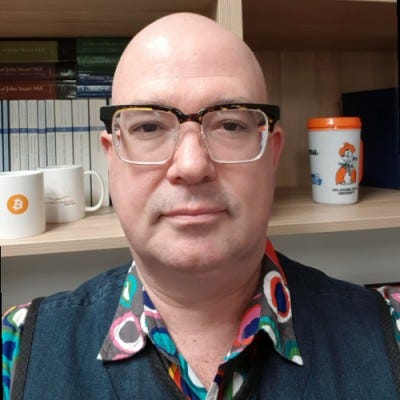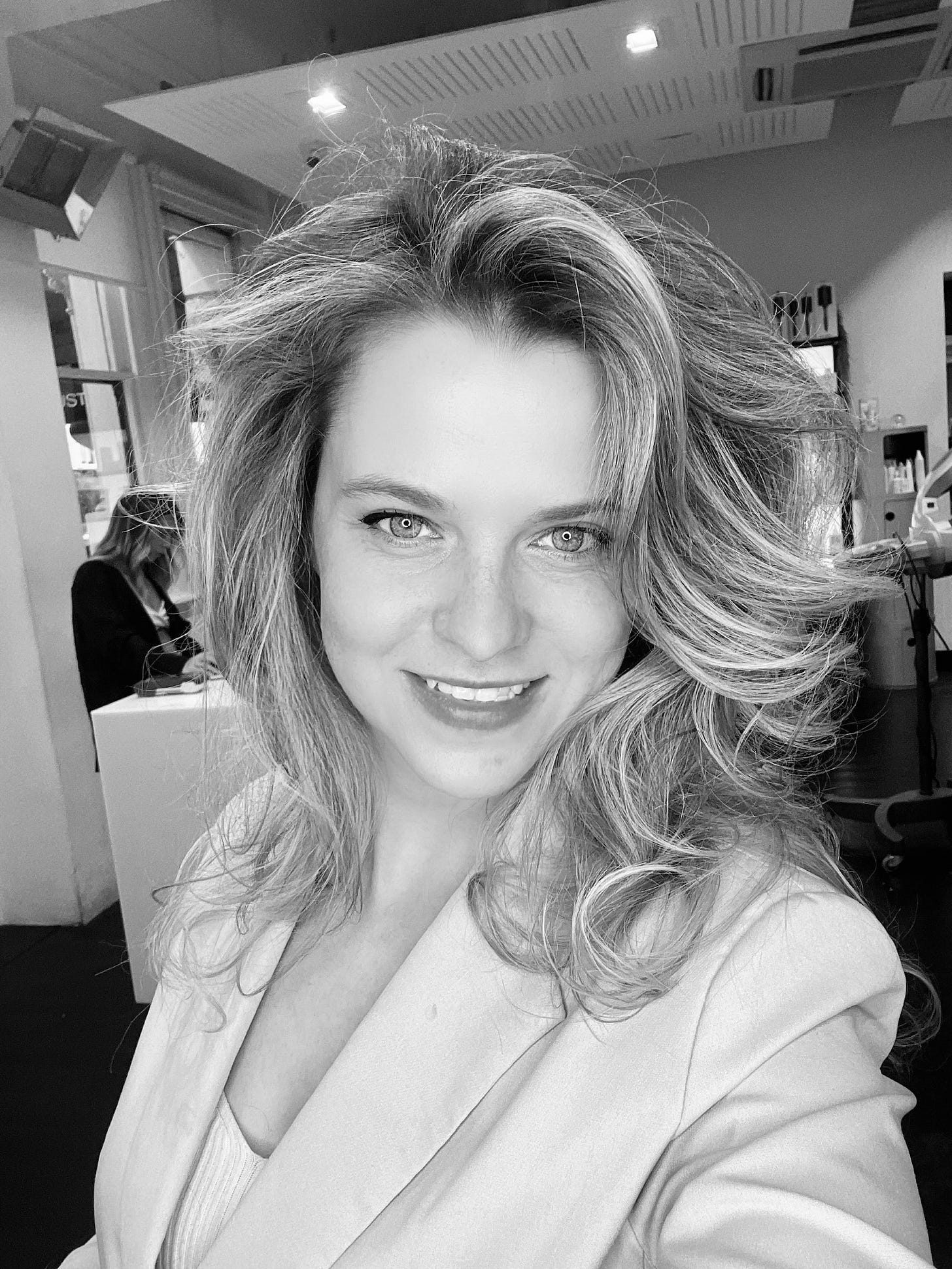Crypto Research Frontiers for 2022
We asked the research team at the RMIT Blockchain Innovation Hub to reflect on predictions for trends they expect to see unfolding in blockchain and crypto over the next year and what research topics they are most excited about…..
Jason Potts - Co-director of BIH, economist, GenX Smartchain
Over the past year or so, crypto has gone mainstream on the demand side, with many more people entering the market (especially via NFTs!) as well as institutional normalisation in investment and strategy etc. This gives crypto cultural and political salience.
Behind the scenes, infrastructure has also been building such as L2, bridges, stablecoins and DeFi etc - and it’s not just the scale and depth - it’s also highly competitive! Big new projects are launching almost daily, and as more settlers arrive, the wild frontier is transforming…
The big research question I'm interested in this year is on commons management and local public goods. As any society evolves and develops, it has to deal more and more with the problem of collective goods. Crypto is very much at this phase now. These collective goods are seeing the separation of L1 and L2, with L1 providing collective security. Collective goods problems on standards for example, are becoming salient in the interchain world. Collective goods problems around education pipelines into blockchain, or research, or political representation and lobbying are pressing. My intuition here is that in every case, the answer is DAOs. That is, while DAOs have so far been solutions to problems of decentralisation for protocol governance, they are also valuable for industry-level and the above problems. This is why DAO research will be a major thing I'll be focusing on this year.
TLDR: year of DAOs
Chris Berg - Co-director of BIH, economist, elder-millennial
There are two big research questions I’ll be focusing on this year: the dynamics of multi-chain and cross-chain competition, and DAO governance.
The competitive landscape of crypto in the second half of 2021 was shaped by the dominance of the Ethereum Virtual Machine (EVM). Teams deployed, slightly modified versions of successful projects onto alternative Layer 1 blockchains with EVM implementations such as Avalanche. This was aided by a rapidly developing set of bridges and the rise of a few DeFi primitives that had launched earlier in the bull market (most prominently the Olympus DAO algorithmic stablecoin). The fact that all these chains used the EVM and almost every project used open source software meant that in Q3 and Q4 2021, we saw probably the most interesting period of fast-follower competition in the history of business. The exceptions to that dynamic are notable. One team abandoned the open source model to protect their innovation (UniSwap v3). More importantly, Solana managed an enormous amount of growth while requiring developers to recreate these DeFi primitives for Solana’s virtual machine, where developers write in Rust rather than the EVM’s Solidity.
I expect that fast following will continue as many other EVM implementations develop. But they will do so in an increasingly diverse and multichain landscape. Capacity limits in Ethereum have meant that it is no longer realistic to deploy retail-focused projects on the Ethereum mainchain. But there is no single Layer 2 for Ethereum that obviously looks like the dominant solution. The upcoming Layer 2 competition puts us in a multi-chain and cross-chain world, at minimum. But at the same time parallel developments across the ecosystem - particularly in Cosmos and Polkadot - are working to modularise blockchain infrastructure. This year will be a big year for infrastructure, as the industry knits together the increasingly modular systems such as those around settlement and data availability into a much more complex network.
Two big questions are whether the space will be dominated by demand to settle onto the Ethereum network (this is the L222 thesis) or whether consumers are comfortable operating in a multichain world where the security assumptions are more variable (the multichain thesis). An underestimated factor will be whether EVM dominance was a temporary state driven by the state of chain development during 2020 and 2021, or if the EVM becomes a standard. I wouldn’t bet that we’ve reached the end of history for blockchains just yet.
The other big research question I have is around how we can drive efficiencies and effectiveness into DAO governance. DAOs are a remarkable institutional innovation. Through 2022 and 2023, we’re almost certainly going to see DAOs get more ambitious. It seems inevitable that a DAO will take over a traditional firm eventually. The question will be: what next? While the sector is rightly focused on DAO tooling around voting and treasury management, the real challenge is to make the DAO form competitive against traditional firms and cooperatives. Or if we discover that DAOs don’t work well for traditional team production, then our challenge is to optimise their design for the new democratic and entrepreneurial work that they can do. Our research and the sector’s experience suggests that DAO governance needs to become more complex and polycentric - committees and councils in DAOs need to be more than just multisigs and proxies of founding teams. Fundamentally, blockchain and cryptocurrencies are governance technologies - how we govern data, how we govern digital assets - and we’ve got a long way to go to make decentralised, distributed and democratic governance effective enough to be competitive against traditional forms of organisation.
TLDR: EVM something something
Kelsie Nabben - Researcher at BIH, ethnographer, going to self-reference like Darcy
I have my attention on the social outcomes of decentralised infrastructure. This includes crypto and public policy, both mainstream social influence (ie public policy, for example influence on the U.S. infrastructure bill), and certain jurisdictions rejecting / suppressing / cracking down on crypto ideology and tooling.
I’m working on participatory data governance frameworks, and anticipate proliferation of products and tooling in this area.
Open hardware is just beginning to emerge (as per 2021 frontiers focus). This has found its narrative in the idea of linking the digital and physical in ‘the Metaverse’.
I’m sustaining my focus on algorithmic governance, governance experimentation, caution as to the social outcomes of some of these ideas, and crypto as steering systems (aka Web3.0 as the re-birth of cybernetics). I’m specifically interested in the role of people and machines in how cultural and ideological ideas of “autonomy” are manifested through “automation” and “autonomous” systems.
Darcy Allen - Economist at BIH
In 2022 governance will be increasingly important for web3 networks. The way that communities make decisions will be critical in navigating a competitive multi-layered environment. Should be build bridges? If yes, where do we bridge to? How do we make our ecosystem incentives sustainable? How should we spend our treasury to attract talent and users? And so this year my research will contribute to the frontiers of cryptoeconomic governance.
Building DAO tools. DAOs need better governance mechanisms for rewarding contributors, diversifying their treasuries, decisions on funding local public goods (e.g. grants), and for the emergence and accountability of subDAOs (or whatever we’re calling them by the end of the year). But designing DAO tools is hard: they need to be robust in an open, anon, dynamic web3 environment. I’ll explore how regulatory and political theories inform the iteration and design of DAO tools.
Innovations in cryptodemocracy. Our ongoing research program in cryptodemocracy treats votes as bundles of property rights coordinated through digital infrastructure. I expect 2022 to yield more experimentation in governance rights (e.g. what rights can we add, or unbundle, or sell). These innovations have implications for both stability and decentralisation (e.g. the Curve wars). How can we understand innovation and entrepreneurship in governance rights through the lens of cryptodemocracy?
A blockchain institutional grammar. Blockchains have characteristics of firms, states and markets. To design blockchain governance we need a consistent institutional grammar, rather than by analogy. There are many ambiguities in how we describe blockchain governance. I’m building an empirical research program that describes blockchain governance more consistently, using frameworks developed to study polycentric nested systems of governance (such as the commons) and apply them to cryptoeconomic systems.
More broadly I’m interested in research on the governance and implications of bridges, new models of liquid staking (e.g. staking derivatives, superfluid staking), innovations and maturity of airdrop strategy, and the dynamics between the L1s and L2 (including the sustainability of ecosystem incentives).
Sinclair Davidson - Co-founder BIH, economist and grumpy gen-Xer
2022 will see the continued mainstreaming and normalisation of crypto into the economy and more generally in society. Having spent the past few years building the tools to build a crypto economy and recreate the non-crypto economy, in 2022 we will see those tools being deployed to create business models that can be deployed to traditionally non-crypto users. More on-ramps and off-ramps to the crypto will be built. User experience will be emphasised. 2022 will be the year that DAOs are recognised as being legitimate mechanisms to organise cooperation and the division of labour. NFTs will be seen as more than grungy monkey jpegs and more as allocations of property rights. Stablecoins will be seen as money and risk-free assets. Crypto-gaming will come to be seen as a legitimate career path for young people entering the space.
Vijay Mohan – “Economist”
An interesting space that I will be monitoring in 2022 is how governments deal with cryptocurrency regulation. While all eyes are on the US for leadership, other governments (eg China, Russia, India, El Salvador) are also making moves and I think 2022 will be a year where many governments will be forced to take a stance on regulation (possibly even with coordination between governments). The spatial evolution of crypto - by which I mean where it will be held, where it will be mined, where entrepreneurs and resources locate, and so on - will be determined (to a large extent) by these regulatory actions. I also think this will be an interesting year for blockchain governance, with experiments in various voting and governance structures. I hope to contribute to research in both these areas.
Aaron Lane – BIH's lawyer, median-aged Millennial
As Jason said, 2022 is the “Year of the DAO”. Starting from this basis, I’m teaming up with Jason Allen, Ann Sofie Cloots and Peter Hunn to compile an edited volume that brings together an interdisciplinary team of law and technology scholars, blockchain researchers, and legal practitioners on “DAOs and the Law”. Some particular questions that I’m interested in exploring as part of this project include “why do decentralised firms exist (with apologies to Coase)” and “what does a DAO know?” (ie how does the organic theory in corporate law fit with DAOs?).
In 2021, an Australian Senate Committee recommended that Australia legislate for a limited liability DAO, adopting submissions from the BIH and our friends at the Digital Law Association. The Australian government has adopted this recommendation and, in 2022, the task is now how this is achieved in the Australian context. We have the Wyoming law and the COALA model law as starting points but some careful and technical thought will be required - and I’m looking forward to contributing to the Australian government’s roundtables. There’s an interesting evolutionary economics project that I might pitch to Jason once we are done here, that is how model laws are adopted and diffused throughout jurisdictions - perhaps comparing the current task with DAOs to previous legislative efforts around the world regarding fintech sandboxes.
In 2022 I’m also keen to dust off a BIH research idea circa 2020 whose time has now come – the implications of new decentralised digital platforms for antitrust and competition policy. Regulators urgently need theoretical and policy guidance for the regulation and accountability of digital platform infrastructure that emphasizes evolution and pushes back on self-interested regulatory approaches. The current antitrust and tech discourse has largely been focused on centralized digital platforms. Unexplored (with one notable exception from Thibault Schrepel), is the antitrust implications of economic infrastructure not owned by a single entity or new legal structures in DAOs and what a free-market approach looks like in this context.
Finally, and more on the “applied” research side, I’ll be teaming up with Marta Poblet and other RMIT colleagues on work I’m calling “broken records” - looking at blockchain startups in the music industry and how they might displace existing copyright collection agencies.
Alexia Maddox - Sociologist at BIH, perpetually curious, crypto-awkward (eschewing generational affiliation)
Questions that drive me for 2022 include how to research DAOs (particularly using automation and creating co-constructed research) and the NFT phenomenon and its applications. DAOs bring with them many questions, ones of governance and ones of application. Data oracles, which feed information into a DAO, smart contract or blockchain, seem to me to be one of the mediating channels between on-chain/off-chain actions that also deserve attention. It is these intersections of (automated) action, or inaction, in in-between or threshold spaces that is likely to hold a key to both what is possible (for a DAO to do) and unintended consequences (ie how it can be exploited). DAOs articulate an interesting experiment in the relationship between human and non-human actors, and the role of automation within collective projects. While I plan to observe a range of DAOs, I am interested in how automation and the non-human world can be connected to sustainability agendas. Can a whale automate its own environmental intervention, for example? The very existence of DAOs allow me to ask conceptual and applied questions that were not previously possible about the agency of non-human actors in an often human-centric system.
For NFTs, I am interested in their cultural and economic significance. NFTs create value from their ability to implement scarcity within a digital environment of copy-paste proliferation. From a cultural perspective, not all NFTs are equal. Drilling down into the emergence of NFT profile picture projects such as the CryptoPunks and Bored Ape Yacht Club this becomes very apparent. Profile picture NFTs are algorithmically generated from an initial stock of attributes, making each one unique. The aesthetics and their perceived value appear deeply linked with collector cultures, but also with digital cultures. They represent property ownership in the Metaverse and the portability of a digital identity signifier across platforms. This gets tricky when the profile picture project itself becomes political and raises governance questions, as has been the case for Pudgy Penguins (those little cuties) - is the answer to DAO it? (see what I did there?) Additionally, I am fascinated by the emergence of creative practice in the NFT space and see this combining with immersive experiences (AR/VR) and the metaverse. This metaverse will not be like second life, a niche space, but a more mainstream platform equivalent to how people use social media today. I am avidly observing the ways Web3 projects such as NFTs point to how the metaverse could function, who will own it, how we’ll play in it and what e-commerce and market dynamics will look like within it.
Sarah Sinclair – Educator & social economist – “young..ish! genXer”
I’m interested in the way the rapidly evolving crypto frontiers (DeFi, DAOs, NFTs) will loop back to supply the infrastructure to gain scale adoption in traditional economic sectors, impacting or disrupting sectors such as real estate, energy systems, supply chain management, etc. Very 2017, but blockchain applications that might not have been possible in 2017 now have deeper digital infrastructure and tools to resolve, transform and disrupt the real economy. An extension of this is considering how mergers and acquisitions, or collaborative activity evolves to bridge the traditional industrial and cryptoeconomy sectors eg (DeFi consolidating with real estate specialist).
A second focus is on the diversity in the sector, is there a move away from the dominance of “crypto bros” to a more gender inclusive environment? I’m interested in understanding the pathways to a more equitable industry. As an educator I think identifying and reducing perceived gender barriers to blockchain related education and entry level employment in the cryptoeconomy is a good place to start.
Max Parasol – BIH researcher, Sydney Office Manager
In 2021, traditional VCs, institutional investors and family offices, new to crypto, entered the space. This means crypto markets are now not immune to general economic sentiment.
NFTs also onboarded many who will now realise in 2022 that most NFTs are an illiquid asset. Some will leave crypto land in frustration. Others will stay to help build new businesses. This is a natural market correction.
This is because the next 12 months will be far more focused on revenue first business models like Play-2-Earn. Meaningful progress on hardware and middleware infrastructure should also push a more decentralised Web3 farther away from platforms like OpenSea, that have centralised servers subject to hacks.
Importantly, the data always suggests that the engineers hired in a bull market will stay for any truly bear times. A good (but more circumspect) time will be had by all in 2022, so I look forward to researching the business models that make sense in 2022.
Vy Nguyen - Not (sure if I am) an economist, do not know much about generation DeFinition
With the increase in blockchain adoption and regulatory clarity, I would like to learn how and when insurance, together with other risk mitigation strategies, can play a more important part of the ecosystem. The insurance industry has been dominated by large institutions due to the underlying economics of pooling and diversification. Given the volatile and unique nature of the industry, it is challenging to apply the traditional insurance principle to protect the members of the community. Blockchain technology and DAO have the potential to allow peer-to-peer insurance approaches to be cost effective and scalable. I do expect there would be creative insurance solutions that can be borne out of the recent boom in NFT.
From the other side of risk - personal finance, it takes a whole new level of financial literacy to navigate the crypto market. I would like to focus on how we can integrate the knowledge and educate crypto investors on the new aspects that are unique to this asset class. I am also following new developments of DeFi/NFT integration into Act-To-Earn and Esport - these could be the pathways to bring more diversity and mass adoption to blockchain.
Marta Poblet - Hybrid species of social sciences researcher, not sure about generations either … if 1 hour on Crypto is 7 years on Earth
In 2022, I will be exploring how different crypto and AI communities apply concepts such as autonomy, autonomous systems and decentralisation (where do they intersect and where do they have different approaches), with a focus on improving the governance of commons-based organisations.
As a law and technology researcher, I'll also be working on different legal and dispute resolution frameworks for DAOs and pay attention to the new generation of community/city/nation DAOs and their governance mechanisms.
And of course work with Aaron Lane the BIH Lawyer on our music project. Stay tuned!
Elizabeth Morton - BIH’s tax researcher. Aka that one in the room bringing the conversation back to tax regardless of generation
My research focuses on where it perhaps hurts blockchain enthusiasts the most. That time where there is buzz in the room because of the latest successful innovation, evolution, or growth. That NFT sold for how much? Awesome! You lost your key and Bitcoin is now valued at how much? Damn! You are exploring that latest DeFi offering? Nice!
What comes to my mind? Tax.
With each discussion, what do I raise? Tax.
Tax and crypto is my world at the RMIT Blockchain Innovation Hub. With global developments (and a particular interest in the Australian tax system), I think 2022 is going to be big. At least behind the scenes. Perhaps we will not see (immediate) major tax reform enacted, but there is certainly movement. This flows from the latter half of 2021, where in Australia, we saw a clear message that tax and crypto needs to be considered seriously (ie the Bragg Report).
Whether you think blockchain is a fad or whether you are right in the thick of it, activities evolving across blockchain have real implications for tax compliance and the level of that activity is far from diminishing. We are seeing new forms of assets; new forms of business structuring and new forms of financing evolve.
For taxpayers and tax practitioners, there is an abundance of tax issues under consideration. Many of these are calling into question traditional tax principles that have been long established. These fundamentally challenge the tax compliance function.
For 2022, I am looking forward to delving deeper into the tax and crypto space. Taxing cryptoassets, taxing DeFi activity, taxing DAOs. However, the conversation needs to go beyond CGT, beyond DeFi and even beyond the taxation of DAOs, to contemplate the tax system for the digital economy.
TLDR: Blockchain has made understanding tax cool
Imon Palit – Researcher, an ok non-boomer
In 2022 I’m looking forward to the continuing trend of increased sophistication of risk analytics in the DeFi space. One aspect of DeFi risk that has stayed relatively quiet in 2021 is Oracle price risk. After the Oracle exploit on Compound in 2020, Oracle price feed risk has been seen as almost negligible with trusted feeds from Chainlink. I’m interested if the issue of Oracle price exploits rears its ugly head again, or at least attracts more attention as more leveraged derivative crypto contracts are built on top of price feeds, which then plays an important role in liquidation economics.
After the DeFi summer of 2020, the focus has shifted somewhat to NFTs and now DAOs. I suspect 2022 will see a higher level of merging of DeFi with the NFTs and DAO spaces. I’m sure we will also see innovation in the crypto exchange space as CEXs increase their product offering to compete with their decentralised counterparts. Thus, I am excited about seeing more exchanges offering their own coins, rebates and a gateway to regulated access to AMM and staking rewards.
Tharuka Atigallage - Research and Gen Z crypto native
In 2022, I expect to see a higher demand in the industry to build blockchain-based solutions integrated with other emerging technologies such as IoT and AI. Therefore, this year I am planning to conduct further research on the integration of these emerging technologies to create more meaningful applications. One of the key application domains I am going to focus on this year is supply chain management, which is well suited to demonstrate the synergy among these technologies.
This attempt also includes identifying the socio-technical and legal implications of these applications, especially within the DeFi space and finding ways to address them. Furthermore, it seems that the blockchain community will put more effort into the standardisation and interoperability of blockchain networks this year. Therefore, I am planning to continue my research work on building unified and standardised blockchain solutions by collaborating with the industry this year as well.
Nataliya Ilyushina - Economist, loud millennial
Once again, as Jason said, it will be the year of DAO. I am teaming up with Trent MacDonald to develop a research program - "Work for DAO". This research will look into the new emerging labour markets within DAOs that offer radically different employment types: a hybrid of ownership, traditional employment, freelancing and volunteering. Currently, there is no research done in this space. This gives a unique opportunity for BIH to place itself as a leading expert in this area.
The research program will look at different aspects of employment in DAO: the optimal choice and utility maximising behaviour of the DAO member, remuneration schemes, optimal strategies when working for multiple DAOs, theoretical background for DAO labour markets, supply and demand for labour in DAOs, regulatory/deregulation issues and risks, DAO labour unions model, discrimination and inequality and more.
We will start with establishing our place in work for DAO research by writing an op-ed article and progress to writing an SSRN paper on the overview of the topic. The next step is to conduct a survey of DAO members and collect data for the empirical paper. Suppose we have the first quality data set on DAO members that will allow us to publish the first empirical paper in this space. We are also looking into writing a theoretical paper providing the economic foundations to the DAO labour market and contrasting it with the traditional labour market theories. It appears that there is already an interest for this sort of work from DAOs themselves; hence we are going to apply for a grant from a DAO (eg Gitcoin) to research working for DAO.
The second research area is empirical mapping of automated decision making. As part of this project, we are going to collect data to understand the adoption of ADM and AI in businesses and the evolution of skills and occupations. The critical overlap with BIH work is that DAOs are the special (and probably an extreme case) of automation. DAOs has automated the management, not the employee, which is a conceptually different type of automation that does not pose a risk for jobs (there is a huge, super cool philosophical discussion here between Trent and I for another day!)
I am also aiming to see if the digital skills question from the Digital CBD project can inform both the automation project and the current state of the digital skills level in the post covid Victorian labour market.
Lastly, to apply my health/wellbeing economic angle, I want to see if people who work for DAO, have advanced digital skills and have jobs with a high level of digital engagement demonstrate better levels of wellbeing/mental health/happiness. This work will be conducted with Trent MacDonald and Emmanuelle Walkowiak (from La Trobe).
Trent MacDonald – BIH research fellow, economist, cylon detector, metaverse mapper, crypto cartographer, fire tiger
For me, 2022 will be all about regulation, governance, and mapping. I’ll be watching with interest to see how governments respond to the ongoing growth and development of cryptoeconomies – how governments attempt to influence crypto and how crypto will impact legacy institutions.
The Australian government’s recommendations to undertake a token taxonomy mapping exercise and to establish a DAO company structure will be the centre of my attention. Crypto taxonomy and mapping is important because any regulatory framework must be based on an appropriate classification of crypto-assets; but this is also important and interesting from an economic statistics perspective. How can we understand the impact of these new economies without data? I will hope to contribute to this mapping exercise in Australia, while developing methods to measure other aspects of cryptoeconomies (eg complexity, decentralisation). For instance, by applying techniques from complexity economics and economic geography to measure and map particular blockchain ecosystems and their integration (eg bridging), or from the perspective of the broader multi-chain cryptoverse.
A DAO company structure will accelerate the adoption of this institutional form in Australia, with ramifications at economic organisational and individual levels. We could see the migration of economic activity from traditional corporations towards DAOs and, as a result, a greater number of workers employed by DAOs. This could create an industrial relations upheaval far greater than the digital gig economy developments of the 2010s. As such, I’ll be researching emerging ‘work for DAO’ practices and how they relate to existing frameworks from labour economics. I’ll be developing empirical methods for measuring and mapping the growth of DAOs and surveying DAO workers, to understand the motivations, opportunities, and risks associated with DAO creative destruction.



















